Tutorial: Configuring ViewCast Osprey 820e for a Live-Switched Wirecast Webcast
This tutorial describes how to install and configure ViewCast's dual-channel Osprey 820e card ($1,795 MSRP; as low as $1,400 street) into a Windows system for driving two cameras within Telestream Wirecast, and discusses the board's highly functional set of utilities and SimulStream feature, which allows it to feed audio and video streams to more than one encoding application.
5. Identify the second video input
Since I had been there and done that with the component input from my Canon XH A1, I switched to a Panasonic HMC150 to test HDMI input. The process is the same: You choose the second input in Wirecast's Source Settings dialog, and set your incoming resolution (in this case 720p). Then click Configure to open the 820e Properties window and choose DVI/HDMI Input 1 in the Crossbar tab (Figure 5, below).
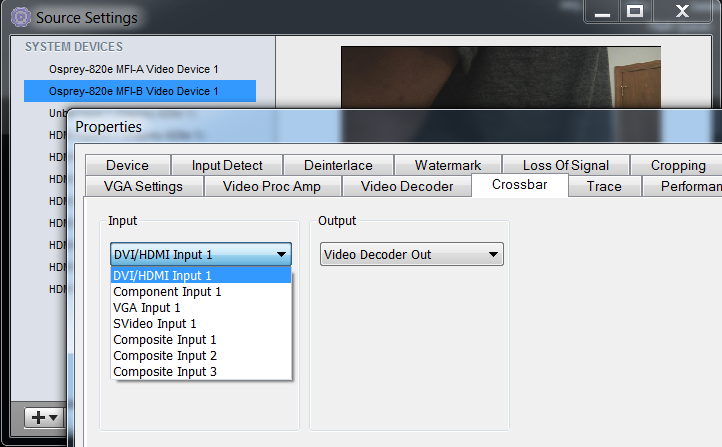
Figure 5. Choosing the second input.
6. Admire the view
I was rewarded with dual views of my scruffy mug--one from each camera--and reminded that it was time for both a haircut and a shave (Figure 6, below). I also saw the curse of the producer using disparate cameras: two different pictures in terms of brightness and contrast. Fortunately, ViewCast has a great set of utilities to resolve this.
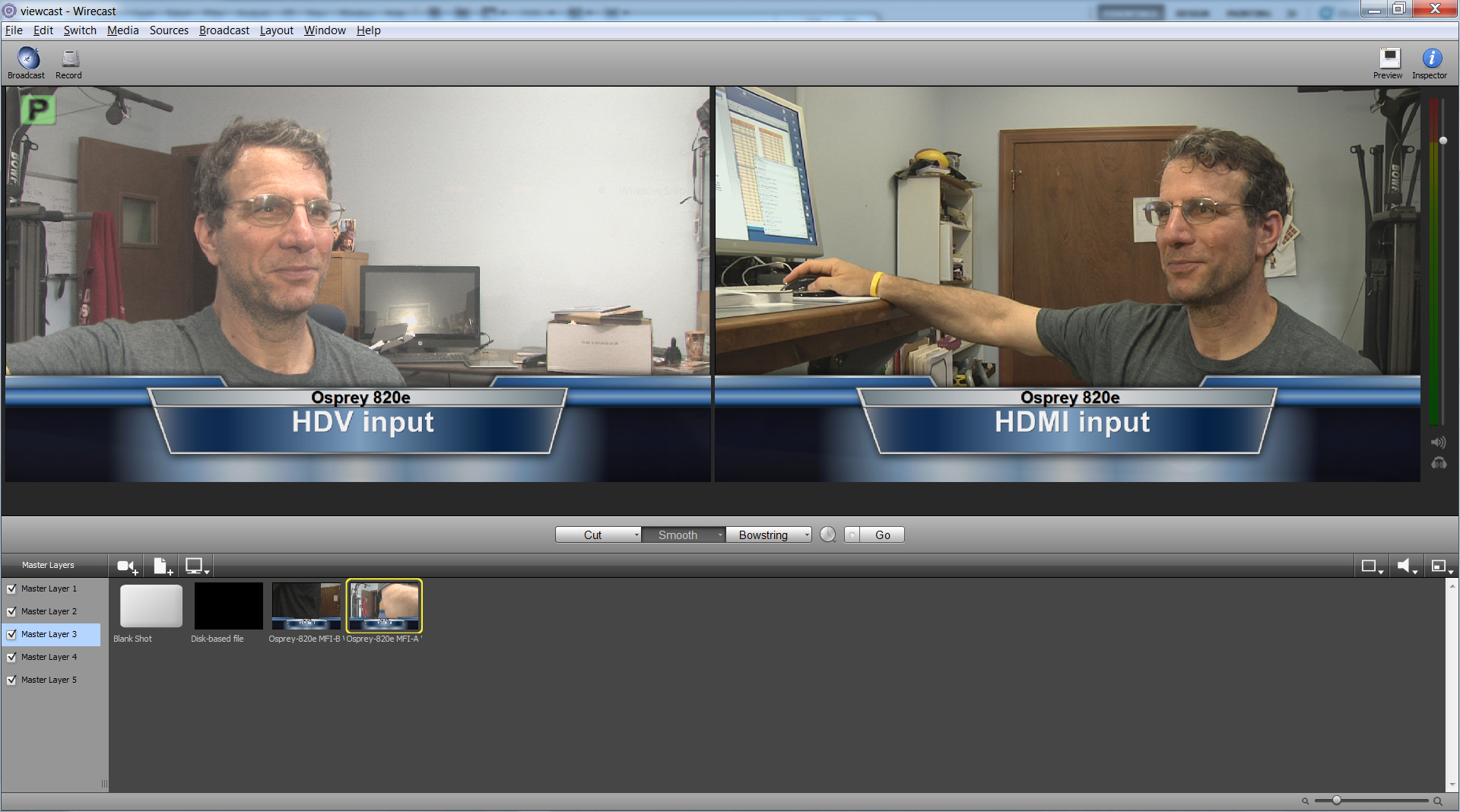
Figure 6. Dual cameras running within Wirecast.
7. Fine-tune the input signal
I returned to the ViewCast Properties screen (Choose Sources > Show Source Settings in Wirecast, click Configure), and clicked the Video Proc Amp tab (Figure 7, below), and made a note to myself to tell ViewCast that they really ought to name these tabs so that producers who didn't work in a TV studio in the '90s would know the functions that they perform. Maybe Video Adjustments?
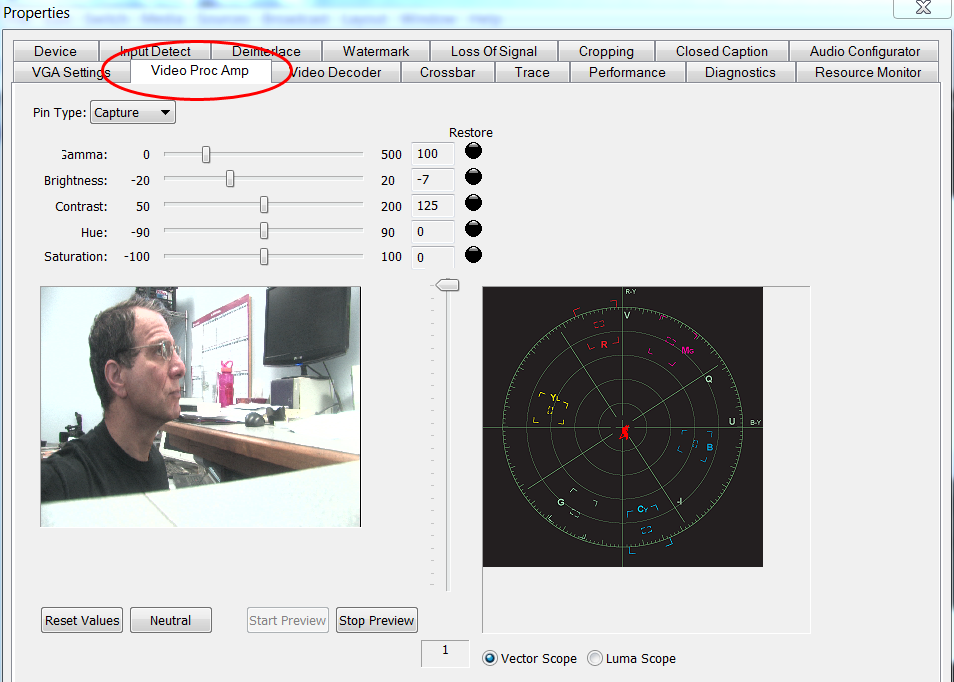
Figure 7. Adjusting contrast in the Video Proc Amp dialog.
Anyway, I shouldn't complain; I've often wished that my XH A1s had a simple adjustment that would boost the contrast a bit, and when connected to the 820e I have precisely this control. Note that though the image is squished in the Video Proc Amp window, it shows at normal aspect ratio in the preview and encoding windows.
8. Identify your audio source
With DV input and some cards like the Blackmagic Intensity Pro cards, audio comes with the video, and you don't have to input an audio signal separately. Because the audio doesn't automatically follow the video with the 820e, you'll have to select your audio input manually from within Wirecast and other programs like the Flash Media Live Encoder.
This sounds easier that it might be, particularly if you're using audio from one of your HDMI inputs. This is shown in Figure 8a (below), where the now-familiar Source Settings dialog shows all available audio input sources. Obviously, if you're using the Unbalanced Input 1, you know which input to select. But what about HDMI?
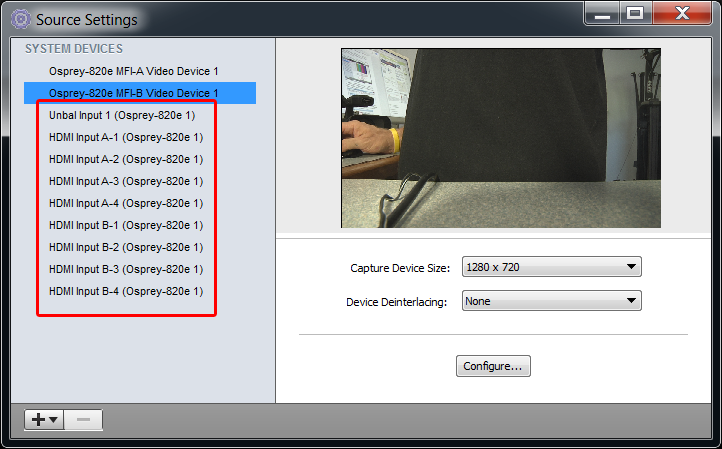
Figure 8a. Available audio inputs.
My sources at ViewCast tell me that there are different flavors of HDMI that use different audio pins, and the proper audio source isn't obvious from the connection. To identify the right input, choose the HDMI source in the Source Settings dialog (in this case MFI-B Video Device 1), click Configure to open the ViewCast Properties screen, and choose the Input Detect tab. As you can see in Figure 8b (below), the audio is available on HDMI Input B-1.
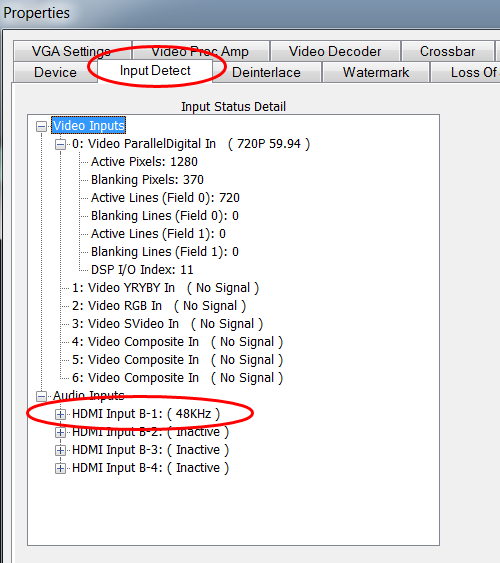
Figure 8b. Identifying the HDMI audio input.
Related Articles
Streaming Media's Marc Franklin interviews Osprey Video CRO Scott Whitcomb on the showfloor at Streaming Media West 2022 about Osprey's Talon 12G hardware encoder and new integrations for cloud streaming.
Any time you produce a webinar that's got PowerPoint and a talking-head video, it's helpful to present them in the same video frame. This tutorial explains how to composite these two sources in Telestream Wirecast.
Streaming Media Producer kicks off its "What Is...?" series tackling essential topics in the streaming media production world with a look at live switching, touching on the differences between switching and mixing, assembling the components and crew of a live switch, and the basics of "punching" a multi-camera show or event for live delivery.
This is the first of a three-part tutorial on using Wirecast to mix two streams of video and other disk-based content. In this first tutorial, I'll describe how to install and configure two Blackmagic Design Intensity Pro cards into an HP Z600 for switching with Wirecast.